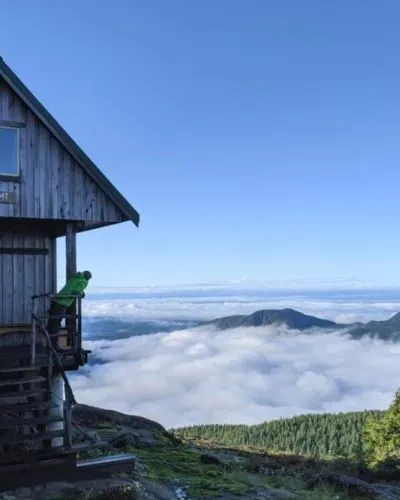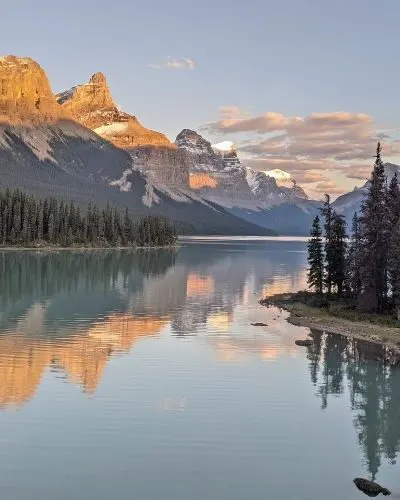Sitting on the slopes of a mountain in Yoho National Park, I found myself picking up and holding a slab of shale containing a half a billion-year-old fossil from an ancient seafloor.
This was my very own Jurassic Park moment, made even more impressive by the fact that the fossil in my hand was one of Earth’s earliest creatures. It predated dinosaurs, humans and almost everything else.
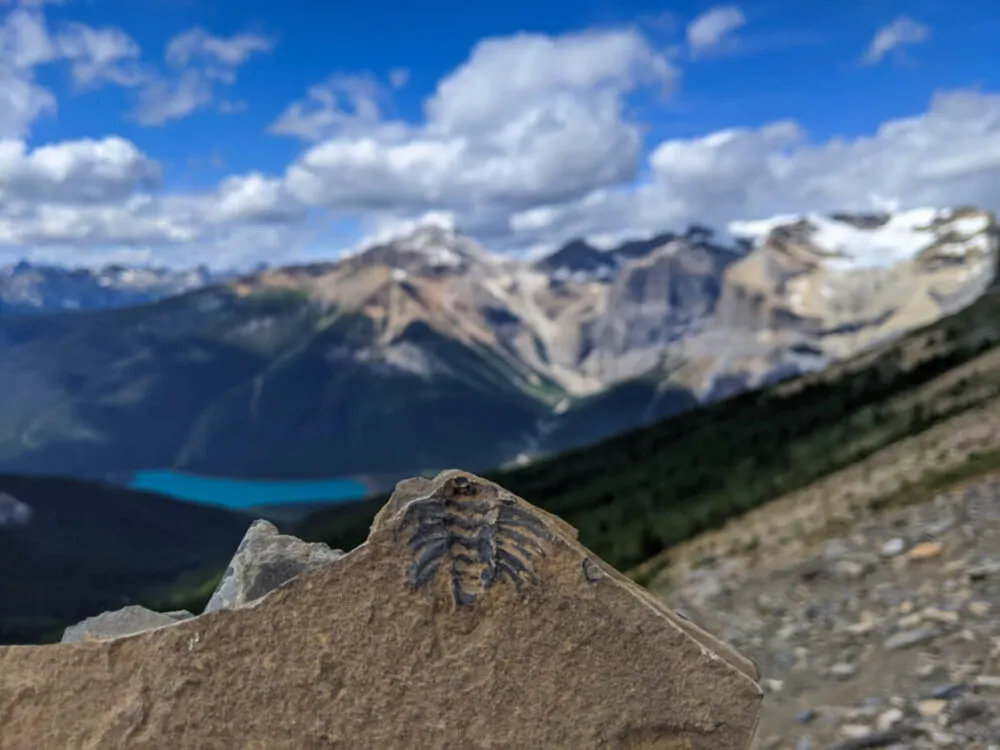
I was in Walcott Quarry, considered to be a paleontologist’s treasure trove. The Burgess Shale rock formation here contains some of the rarest and most exceptionally well preserved fossils in the world.
Accessible by guided hike only, we recently had the opportunity to visit the Burgess Shale with Parks Canada.
We were joined by our good friends Leigh and John, both of whom have a geology background. Leigh is also the blogger and outdoor adventurer behind HikeBikeTravel.
Last updated January 2024. Tourism Golden arranged our guided hike experience with Parks Canada. This post includes some affiliate links. If you make a purchase, I may receive a commission at no extra cost to you.

Introducing the Burgess Shale
The Burgess Shale is a fossil rich rock formation in the Canadian Rockies. The term was conceived by paleontologist Charles Walcott to describe soft-bodied fossils preserved in sedimentary rock layers.
The original discovery was made on a ridge between Wapta Mountain and Mount Field in 1909. Over the next few years, Walcott established a number of quarries in the area (naming one after himself) and excavated over 65,000 fossils.
Yoho National Park is located within the traditional territories of the Ktunaxa and Secwepemc First Nations.

Soft-bodied fossil preservation, particularly of complete animals, is incredibly rare. It is usually only the hard parts of organisms (such as bone or shell) that become fossils. I’ll delve more into the significance of this later.
Now, I am not a scientist by any stretch of the word (or even very science oriented) but I was absolutely fascinated to discover the Burgess Shale. In this post, I have tried my best to present the facts and complexities of the Burgess Shale fossils as I understand them.
If you’re looking for more details than those included here, I’d highly recommend to head to the Royal Ontario Museum’s dedicated Burgess Shale website!

An UNESCO World Heritage Site
Walcott Quarry, one of the original Burgess Shale excavation locations, can be visited today as part of a guided hiking experience.
That’s only on a guided tour, mind you, as access to the entire Burgess Shale ‘Fossil Ridge’ area is restricted under law.
The Burgess Shale is also a designated UNESCO World Heritage Site.
While JR couldn’t wait to step into a paleontologist’s shoes for the day, I was initially most looking forward to the hike to reach the Walcott Quarry.
At 22km and 825m total elevation gain, this trail is not exactly a walk in the park, but offers the chance to see some truly spectacular National Park scenery.

The hike to Walcott Quarry
Our Parks Canada guided tour was led by the convivial Ardelle, who regaled us with fascinating Burgess Shale stories and facts as we hiked steadily up to the quarry.
On the way, we passed Takakkaw Falls (Canada’s second highest waterfall), Yoho Lake (a jewel-blue glacial beauty), beneath Wapta Mountain and finally onto the Fossil Ridge itself.
Not only does the latter contain some of the rarest fossils in the world, but it also looks down to beautiful Emerald Lake and the endless peaks and glaciers surrounding it.

Needless to say, this guided experience was all about the destination and the journey. I was initially apprehensive at the 11 hour length of this tour but the time just seemed to fly by.
It was undoubtedly helped along by our group’s jovial chat, featuring geology, hiking, national parks and more. Sightings of marmots and tiny pikas punctuated the discussions, with a herd of 40 or more mountain goats providing the biggest distraction.

How the Burgess Shale formed
The creation of the Burgess Shale is both a complex and unique event. It’s still not fully understood today.
The Burgess Shale fossils are preserved within shale, a sedimentary rock formed from deposits of mud. This particular section of mud was once at the bottom of the sea floor near the Earth’s equator.
The creatures preserved within the Burgess Shale once lived on or swam just above the sea floor, at the base of a large cliff known as the Cathedral Escarpment.

At some point, over 500 million years ago, the basin under the cliff started to fill up with fine sediment.
Seafloor organisms were quickly buried in layers of oxygen depleted sediment and then a layer of cement-like carbonate. These factors are believed to be integral in the preservation of these soft-bodied fossils.
Over time, the mud became shale as a result of increased temperature and pressure. Tectonic plate movement transported the Burgess Shale to its present location in the northern hemisphere and then was thrust towards the sky as the Canadians Rockies formed.
Millions of years of weather and glacial erosion caused the Burgess Shale to be exposed and later discovered by Charles Walcott in the early 20th century.

Why is the Burgess Shale so special?
The importance of the Burgess Shale lies in the rare preservation of both hard body parts and soft tissue (organs, nervous systems etc). This has enabled scientists to study ancient organisms in their entirety.
These fossils have also allowed further examination of the evolution of early life forms. The organisms within the Burgess Shale were alive at the end of the Cambrian Explosion (542 million years ago), an evolutionary event that marks the first appearance of complex animals.
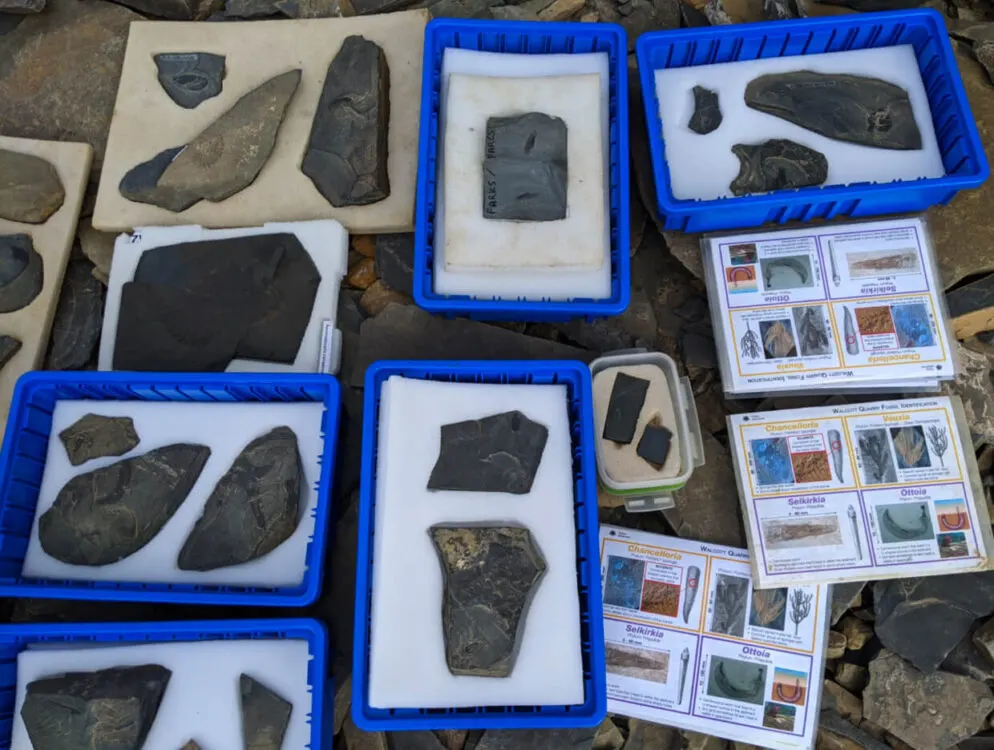
The soft-bodied fossils of the Burgess Shale have helped provide better understanding of the entire ecosystem of that time period.
Walcott Quarry is considered to be one of the best examples of Burgess Shale fossil sites in the world. There are two more excavation sites within the Canadian Rockies – Mount Stephen and Stanley Glacier. The Maotianshan Shales of China are considered to be another notable example.
Other excavated fossil deposit locations include the US (Nevada, Utah), Australia and Greenland.

Discovering the Burgess Shale for ourselves
Arriving at the Walcott Quarry not long after lunch, it was time to get hands on with some Burgess Shale fossils. Ardelle removed some well preserved specimens from a cabinet for us to examine and then prompted us to go find our own.
It didn’t take long – they definitely weren’t kidding about this being a fossil rich site. It seemed like every second piece of shale contained a fossil of some sort.
And that takes into consideration the thousands of fossils that have already been removed from here and sent to museums across North America.

Trilobites (an extinct marine creature with the appearance of a giant woodlouse) seemed to be everywhere. Indeed, there were more than 100 types of trilobites during the Cambrian period.
But it is the soft bodied fossils that the Burgess Shale is famous for. These are a little harder to spot, especially as so many of these creatures look quite bizarre to us today. Ardelle was on hand to help, drawing from her own immense knowledge of the Burgess Shale and its inhabitants.
Sponges, molluscs and worms were the easiest to identify, with JR finding one piece of shale with dozens of examples of each with a few trilobites thrown in for good measure.

The creation of Yoho National Park
Our examination of the Burgess Shale fossils was occasionally accompanied by a train whistle.
Even all the way up in the Quarry, we could still hear CPR traffic passing through Field. It is fitting, however, since it is unlikely that the Burgess Shale would have been discovered if not for the railway.
Railway construction workers were first to report finding “stone bugs” on the slopes of Mount Stephen, just above Field.
This led to the discovery of the Mount Stephen Fossil Beds in 1886. The same year, the Mount Stephen reserve was established. It was later expanded and renamed to become Yoho National Park.
Geologists and paleontologists like Charles Walcott were drawn to the area and the rest, as they say, is history.

A journey to compete with the destination
With a guided hike to Walcott Quarry, you too can discover this unique link to the past. For me, it provided a chance to reflect on the relatively recent arrival of humans on the earth and the importance of reducing our impact wherever possible.
On the way back to Takakkaw Falls, we all agreed that this adventure was impressive on so many levels.
From the half a billion year old fossils and Ardelle’s excellent interpretation to the spectacular views and leisurely hiking pace, this was a unforgettable day out in the Canadian Rockies.
Keep reading for more info on booking your own Burgess Shale adventure.

Burgess Shale, Walcott Quarry: Trip planning guide
In this section, I will share everything you need to know about joining a Burgess Shale guided hike to Walcott Quarry plus some extra tips to make the most of your Yoho National Park experience.
Burgess Shale location
Walcott Quarry lies on a mountain ridge within a restricted UNESCO World Heritage Site in Yoho National Park, British Columbia, Canada. It is not possible to visit the Burgess Shale located here on your own – the area is only accessible on a guided hike led by Parks Canada or the Burgess Shale Geoscience Foundation.
The hike to Walcott Quarry begins at Takakkaw Falls, a spectacular 373m waterfall. It is a 25 minute drive from the small town of Field, which is situated on Highway 1. Field is less than an hour away from Banff, Alberta.

The following trip planning guide will focus on the guided hike to the Walcott Quarry but here’s a quick overview of the other Burgess Shale-type locations and guided hikes in the Canadian Rockies:
Mount Stephen, Yoho National Park: Mount Stephen is best known for having an extensive collection of trilobites. The hike is 8km return with almost 800m elevation gain, making it a steeper but faster trail than the one to Walcott Quarry. The tour is shorter too, being about 7-8 hours long. The trailhead for this guided hike is only 10 minutes walk from Field.
Stanley Glacier, Kootenay National Park: This Burgess Shale location is the most newly discovered fossil site in the Rockies. It is reached by a 10km return hike with 450m elevation gain (the trail is open for all, not just guided hike participants). Parks Canada describes this as the most family friendly Burgess Shale tour, lasting around 7 hours.

Walcott Quarry guided hike reservations and fees
In 2024, Walcott Quarry guided hikes will run every Monday, Thursday, Friday, Saturday and Sunday from mid-July to early September.
From 6th-15th September onwards, tours will run on Friday, Saturday and Sunday only.
Reservations are required. Reservations usually open in January each year, with the date announced in the preceding December.
In 2024, Walcott Quarry reservations will open on 23rd January at 8am MT.
Reservations can be made by phone (1-877-737-3783) or online. The reservation fee is $13.50/party by phone and $11.50/party online.
Guided hike prices for 2024 are:
- Adult $118.08
- Senior (64+) $99.19
- Youth (8-16) $80.29
Children under 8 are not allowed to join this guided hike.
All hike participants must have a valid National Parks pass (day use or Discovery Pass). This must be obtained at least one day before the tour since there is nowhere to buy one in person before the 7am start time!
In 2024, the Parks Pass fee is $11 per adult, per day.
Walcott Quarry hike difficulty
The hike to Walcott Quarry is 21km with 825m elevation gain. It is an out and back trail, meaning you hike out to the quarry and back on the same route (so 11km each way).
As someone who hikes regularly, I would rate this trail to have moderate difficulty. If you don’t hike often (particularly in the mountains and/or at elevation), you may consider it to be a very challenging hike.
Important to know:
- The terrain is not technical, with no scrambling required
- The most challenging sections are the switchbacks near the start/end (steep, slippery sections) and the switchbacks to the quarry (steep, loose rock)
- Weather conditions can vary and change quickly. Snow is possible at any time of year
- Around 3km of the trail traverses a rock slide, with exposure to the western aspect. I found the condition of the path to be mostly flat and well maintained
- The Walcott Quarry itself does not have any shade and consists of loose shale
- Elevation may be an issue for some people. The starting elevation is around 1500m, with the quarry therefore being located at 2300m+. Hiking at high altitude is more tiring due to less oxygen being present
- Parks Canada does not recommend this hike for people with recurring knee, back or ankle injuries.

The other factor that increases the difficulty of this hike is the length. 21km is a respectable distance for any day hike, especially with over 800m of elevation gain.
The good news is that this distance is well spaced out over a 11 hour day, with plenty of breaks. This does make it a lot more manageable.
If you’re unsure whether the Walcott Quarry hike is for you, I’d recommend going on at least a few test hikes (15-20km with at least 500m elevation gain) before booking. I’ve also written a detailed overview of the trail below to help you in your decision making.

Tour itinerary: what to expect
As mentioned above, reservations are required for the Walcott Quarry guided hike.
The meeting point is at the most northern end of the Takakkaw Falls parking lot. The start time is 7am. It’s very quiet at that time of day so it is pretty easy to spot the white Parks Canada van with uniformed staff members.
Please note that Yoho is located in the Mountain Time Zone (NOT Pacific). This is the same time zone as Banff National Park.
After introductions, signing of waivers and a verbal gear check, it’s time to get hiking!

Trail overview:
- Starting at the Takkakaw Falls parking lot, the path is wide and almost completely flat as it leads towards the Whiskey Jack Wilderness Hostel
- After a pause at the trail sign, a switchback ascent begins with 185m total elevation gain in 1km. The corners are on the steep side. Keep an eye out for the amazing views of Takakkaw Falls!
- At the top of the switchbacks, it’s time for another short break before heading onto the Highline Trail
- The next section starts with a short climb and then continues to ascend very gradually all the way to Yoho Lake (2.5km, 110m elevation gain)
- Outhouses, picnic tables and a scenic view await at Yoho Lake. We stopped here for just over 30 minutes
- Into the forest beyond Yoho Lake, the path narrows and the views of Emerald Glacier and Emerald Lake appear. The trail climbs steadily, gaining almost 300m over the next 3.5km. There is one very short rocky section that features uneven footing (our guide also suggested not to stop here due to the risk of rockfall)
- We had an early lunch at a rocky viewpoint overlooking beautiful Emerald Lake. Stopping for over an hour, our guide presented a timeline of history while we ate
- Leaving the lunch spot, the next 2km features steady (but mellow) elevation gain to the quarry junction (100m). The path crosses the lower Burgess Shale fossil site, where we paused for 15 minutes to look for fossils
- The quarry junction marks the beginning of a steep 500m (with 130m elevation gain) switchback ascent through, but not on, shale.
- We made it to the quarry around 1pm and stayed just over an hour. The return journey is the exact same route, but with fewer extended stops
The guided hike ends back at the Takakkaw Falls parking lot. We arrived shortly before 6pm, which is the anticipated finish time.

What to bring on the Burgess Shale hike
Parks Canada’s checklist of mandatory items for the Walcott Quarry Burgess Shale hike includes:
- Warm layers of clothes (no cotton)
- Rain jacket
- Rain pants
- Winter gloves
- Winter toque/hat (no cotton)
- Hearty lunch and multiple snacks
- Drinking water (at least 2 litres per person)
- Sturdy and worn-in hiking boots
- Extra wool socks
- Hiking poles
- Sturdy and supportive backpack with waist belt
- Sunglasses
- Sun hat
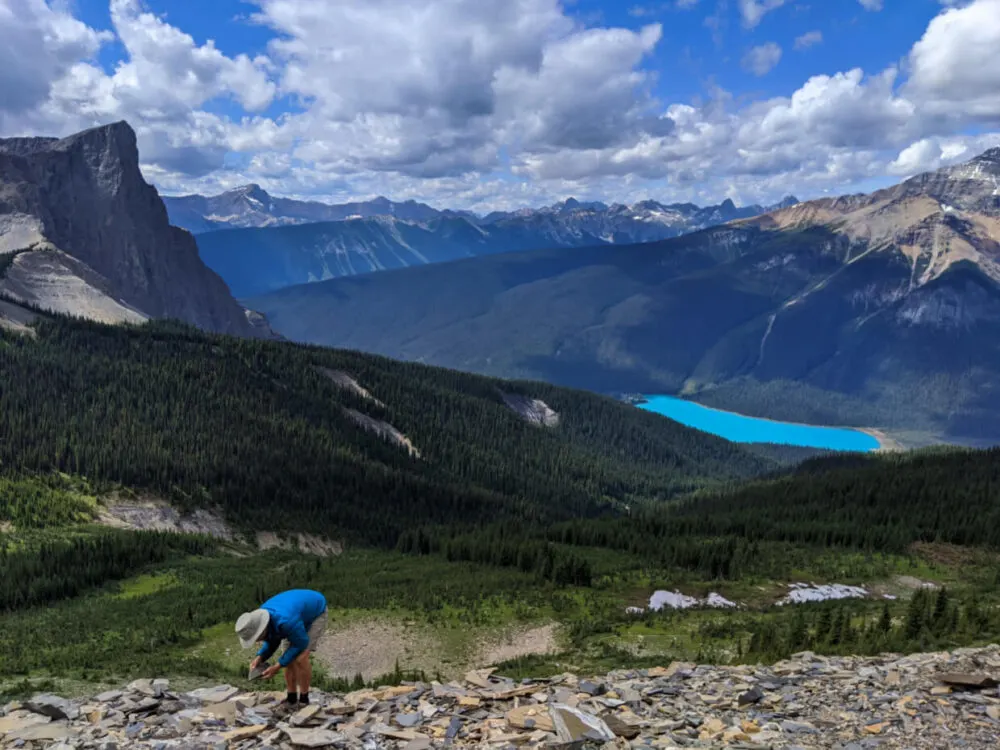
Other items
Reading glasses (as applicable), toilet paper and sunscreen are also suggested items.
Check out our recommendations for hiking gear and non-cotton clothing on our Resources page
This comprehensive list is almost identical to our standard day hiking packing list, with the exception of the extra hiking socks. We added in our backcountry first aid kit, though Ardelle (our guide) carried a larger one for group use. We also had our own bear spray, though, again, Ardelle had one.
On arrival at the meeting point, Ardelle verbally checked that we had these items. Such a long hike in the mountains absolutely necessitates this amount of clothing and gear. Indeed, we changed layers many times during our late August hike and needed to wear our warm layers while at the quarry.
Hiking poles are most helpful to use on the steep sections of this hike. I personally used hiking poles for the entirety but that’s just my own preference. JR and I usually share a pair of Black Diamond Carbon Z poles, which are incredibly light and fold down into three sections for easy storage when not in use.
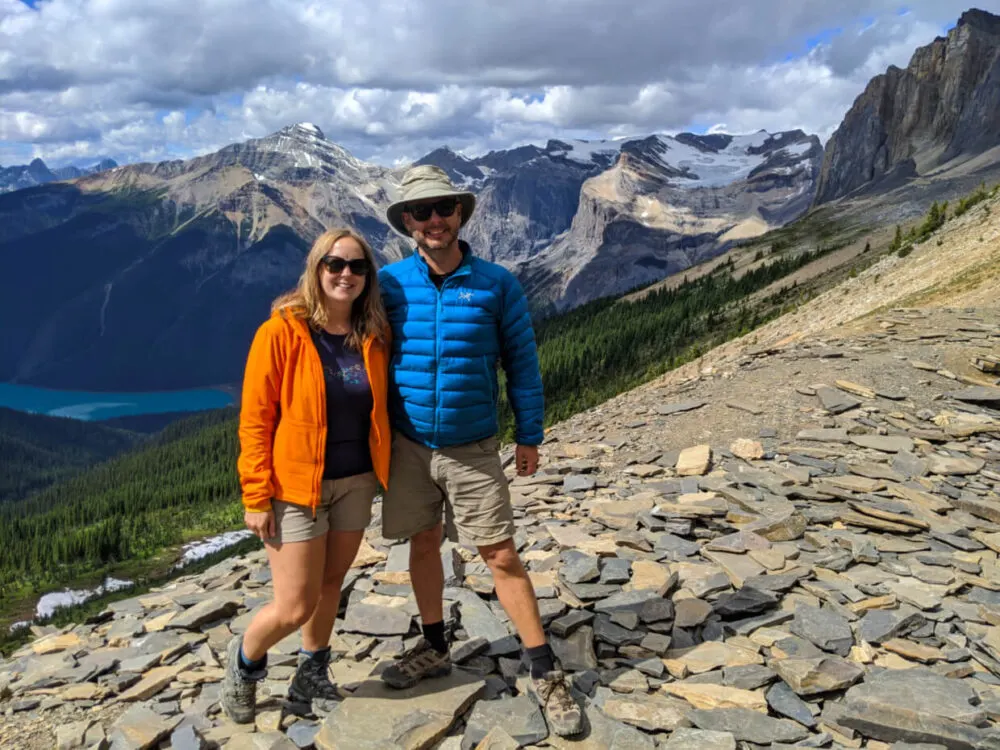
Where to stay before/after your Burgess Shale tour
The most convenient option for overnight accommodation before or after (or indeed, both) your Burgess Shale guided hike is the Takakkaw Falls walk-in campground. Located less than 1km from the Walcott Quarry tour meeting point, this campground is absolutely beautiful with some sites even having direct views of the namesake falls.
- There are 35 campsites at the Takakkaw Falls campground, all available on a first come, first serve basis. We managed to snag one of the handful of campsites after our Walcott Quarry tour, arriving at around 6.30pm
- Being a walk-in campground, this does mean it is tent camping only (no RVs or drive in spots). The walk from the parking lot is completely flat and is about 300m in length. There are wheelbarrows in the parking lot available for use if needed
- There are also two vehicle accessible campgrounds on the Yoho Valley road – Monarch and Kicking Horse. We’ve stayed at Monarch before and it is on the noisy side, being close to the railway line and highway. Kicking Horse is larger, quieter, has showers (during non-Covid years) and a site-specific reservation system

Other places to stay
If camping isn’t your thing, there are a number of independently run guesthouses and B&Bs in nearby Field (25 minutes drive from the tour meeting point).
The Canadian Rockies Inn is a highly rated adults-only guesthouse, located very close to Truffle Pigs Bistro (a must for dinner!)
Emerald Lake Lodge is the only property located on dreamy Emerald Lake (as seen from the Walcott Quarry guided hike!) 24 cabins sit on a 13 acre peninsula, some offering spectacular lake views. With no TVs in the room and zero cell service, Emerald Lake Lodge offers a chance to truly switch off.

Final tips
- Walcott Quarry hikes start at at 7am Mountain Time (MDT). This is the same time zone as Alberta, but one hour earlier than most of British Columbia
- Guided hikes to the Burgess Shale Walcott Quarry usually run early July to mid September
- Large RVs and trailers are not allowed on the Yoho Valley Road (to Takakkaw Falls) due to a very tight switchback section
- If you’re visiting Yoho from a non-mountainous area, I’d would recommend leaving a gap of at least two/three days between your arrival and your Burgess Shale experience to allow some time to acclimatise to the local elevation
- I’d also recommend warming up with a (fairly short) hike the day before
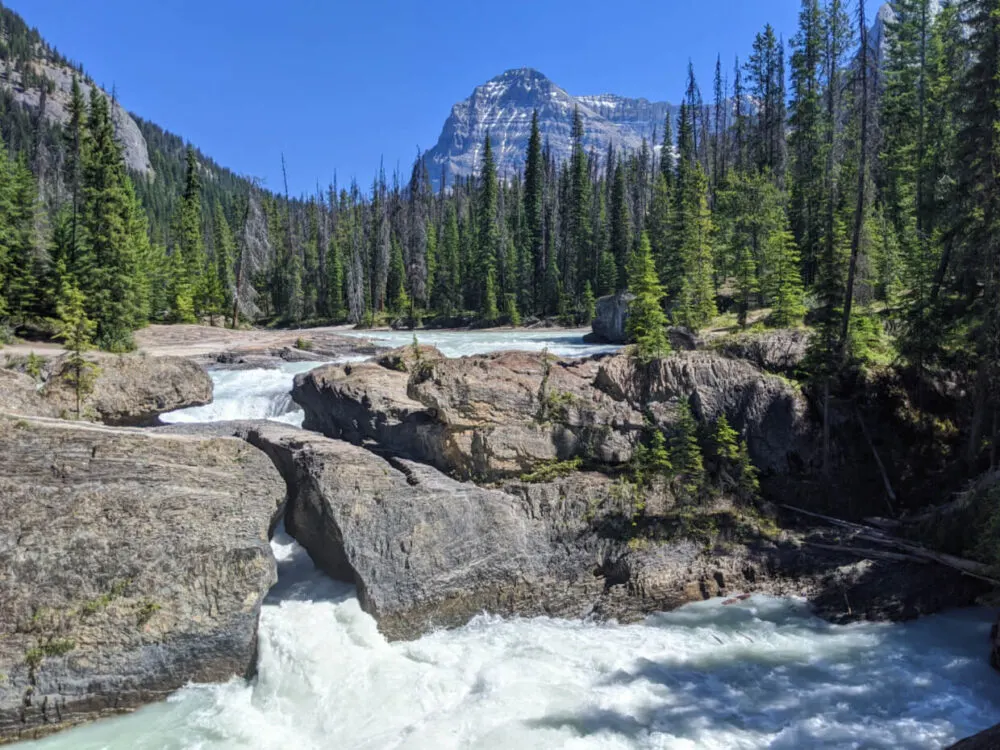
- The only available washrooms are outhouses located at Yoho Lake and the beginning/end of the trail
- To take part in a Burgess Shale guided hike, every participant must have a valid national park pass. If you’re visiting Yoho or other National Parks for 7 days or more, I’d recommend getting a Discovery Pass
- Be sure not to leave Yoho National Park without visiting more beautiful sights, such as Emerald Lake (up close), the Natural Bridge and Wapta Falls. If you have time for one more day hike, I’d highly recommend the Iceline Trail
For further reading on the Burgess Shale, check out the Crucible of Creation by Simon Conway Morris for a good overview. Wonderful Life: The Burgess Shale and the Nature of History by Stephen Jay Gould is an older (1989) and surprisingly controversial take but still considered a must read by many.



If you liked this post, you may also enjoy:
Climbing Mt Norquay’s Via Ferrata, Banff
Complete Hiking Guide to Mount Assiniboine Provincial Park, BC
Lake O’Hara Hiking and Camping Guide, Yoho National Park
18 Must Do Revelstoke Attractions and Activities
5 Awesome Alternatives to Banff, Alberta
Exploring Rat’s Nest Cave with Canmore Cave Tours
22 of the Best Overnight Backpacking Trips in British Columbia
What To Do in Wells Gray Provincial Park, British Columbia
Adventure in your inbox
Subscribe to our monthly email newsletter and receive a round-up of our latest outdoor adventures plus other exciting beyond the beaten path destinations
We never share your information with third parties and will protect it in accordance with our Privacy Policy
Recently published posts:

One half of the Canadian/British couple behind Off Track Travel, Gemma is happiest when hiking on the trail or planning the next big travel adventure. JR and Gemma are currently based in the beautiful Okanagan Valley, British Columbia, Canada

